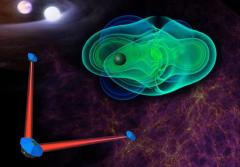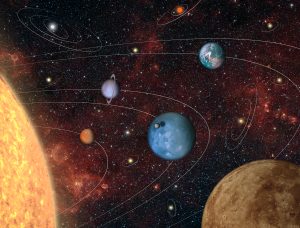Op 31 augustus en 1 september 2017 vindt op de Zernike Campus in Groningen het symposium ‘Fundamentals of Life in the Universe’ plaats. De tweedaagse conferentie over de oorsprong van het leven in het heelal verbindt uiteenlopende vakgebieden van planetaire evolutie tot het creëren van synthetische cellen. Naast een gevarieerd voordrachtenprogramma biedt de conferentie een …
Category: News items
Women In Science Excel tenure tracks at NWO’s research institutes – 2017 (4 fte)
The vacancy for four WISE tenure track positions at NWO’s research institutes is open for applications. NWO’s Women in Science Excel (WISE) tenure track programme provides talented female scientists with an opportunity to advance to a top position at one of NWO’s research institutes. The WISE programme offers: the unique opportunity to expand or develop …
Dutch optical instrumentation parties join forces
UTRECHT, Wednesday June 28th – The Optical Instrumentation Network, one of the three knowledge networks of the NSO Instrument cluster, held its first meeting at SRON Netherlands Institute for Space Research on Wednesday. Parties from the space instrumentation field in the Netherlands came together to discuss how the network partners can strengthen collaboration, how it …
Collaborating on the space detector for ‘missing’ matter
Tsinghua University and SRON Netherlands Institute for Space Research sign a memorandum BEIJING/UTRECHT/GRONINGEN, 29 June 2017 – China and the Netherlands will work together with a view to a future Chinese space telescope for studying ‘missing matter’, suspected thin gas in the universe with a temperature of hundreds of millions of degrees. The renowned Tsinghua …
New 1000-pixel space camera system now mature enough
Researchers from various institutions, including SRON and Delft University of Technology, have demonstrated that it is possible to make a highly sensitive space camera for far-infrared astronomy by using a special type of superconducting detector. Using 961 KID detectors they built a chip for such a camera, which satisfies astronomers’ strict requirements for reliability and …
ESA approves three scientific space missions
Good news for Dutch space research and space sector The European Space Agency ESA has given the green light for the development of three scientific space missions in which Dutch science and the Dutch space sector are playing an important role. These are the gravitational wave detector LISA, exoplanet telescope PLATO, and XARM, a recovery …
Green light given for building exoplanet telescope PLATO
The European Space Agency ESA has given the green light for the realisation of the space telescope PLATO, which will search for exoplanets from 2026 onwards. SRON Netherlands Institute for Space Research will test and characterise 8 of the 26 cameras for PLATO. In addition, SRON will develop models that can extract information from PLATO’s …
Astronomers see mysterious nitrogen area in a butterfly-shaped star formation disk
An international team of astronomers, led by Dutch scientists, has discovered a region in our Milky Way that contains many nitrogen compounds in the southeast of a butterfly-shaped star formation disk and very little in the north-west. The astronomers suspect that multiple stars-to-be share the same star formation disk, but the precise process is still …
Chemical composition of largest objects in the universe unravelled
Where do the chemical elements that we are made up of come from? SRON researcher Francois Mernier investigated this during his PhD research by measuring the composition of huge hot gas clouds in space more accurately than ever before. On Wednesday 31 May, Mernier will defend his PhD thesis on the subject at Leiden University. …
Symposium 5 juli: Big Science with Small Companies
ATTENTIE deelnemers: wegens grote belangstelling wijken we met het symposium en de receptie uit naar het Marinus Ruppertgebouw. Geregistreerden worden per mail op de hoogte gesteld. Als midden- of kleinbedrijf samen met instituten werken aan wetenschap, hoe gaat dat? Wat zijn de ervaringen en waar liggen de kansen voor samenwerking? SRON Netherlands Institute for Space …












